- Sorry, this product is unavailable.
-
 De Vaca was one of hundreds of men who left Spain in 1527 on an expedition headed by Panfilo de Narvaez. The mission was to explore Florida. This is the eyewitness account of how an expedition of over 600 men and five ships was reduced to a band of four half-mad survivors who staggered into Mexico City, having unintentionally become the first Europeans to cross the American Southwest via Texas, Ne Mexico and Arizona. It is the quintessential travel horror story.
De Vaca was one of hundreds of men who left Spain in 1527 on an expedition headed by Panfilo de Narvaez. The mission was to explore Florida. This is the eyewitness account of how an expedition of over 600 men and five ships was reduced to a band of four half-mad survivors who staggered into Mexico City, having unintentionally become the first Europeans to cross the American Southwest via Texas, Ne Mexico and Arizona. It is the quintessential travel horror story. -
 A fascinating history of Christmas carols and their meanings. Who was Good King Wenceslas? What are the pagan origins of The Holly And The Ivy? And - of course - what was the partridge doing in the pear tree? Carols first appeared in the Middle Ages, when a carol was any song sung with the singer standing in a circle; they were banned under Puritan law and united the soldiers on both sides on the Western front; and they are the longest running tradition of Christmas.
A fascinating history of Christmas carols and their meanings. Who was Good King Wenceslas? What are the pagan origins of The Holly And The Ivy? And - of course - what was the partridge doing in the pear tree? Carols first appeared in the Middle Ages, when a carol was any song sung with the singer standing in a circle; they were banned under Puritan law and united the soldiers on both sides on the Western front; and they are the longest running tradition of Christmas. -

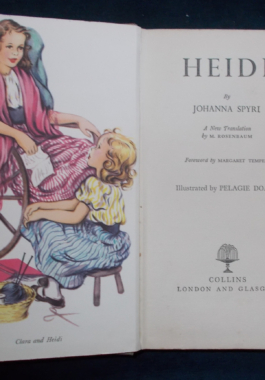
Heidi: Johanna Spyri
$9.00First published in 1880, here is Heidi's story - a young Swiss girl whose parents' sudden death leaves her to be brought up by her Aunt Dete - a hard-working woman who loves Heidi, but does not have the time or resources to look after a child in busy Frankfurt. She leaves Heidi with Heidi's grandfather, who lives in the Swiss mountains. The lonely, embittered old man lives like a hermit on the mountain-top and has nothing to do with the people in the village below. Known to all as “Alm-uncle”, Heidi's grandfather is good-hearted but mistrustful of the villagers. He refuses to send Heidi to school and allows her to roam the pastures with a mischeivous young goat herder, Peter. They become good friends but events take a turn when Aunt Dete decides that Heidi must stay in Frankfurt and learn to earn a living as a companion to a rich invalid child, Clara, and soon learns to read and write along with the little girl. The city begins to take its toll on the young Heidi and she becomes ill and depressed, longing for the open spaces. How Heidi returns to her beloved mountains, reforms her crotchety old grandfather and helps Clara regain her health forms the rest of this perennial classic. With illustrations in colour and black and white by Pelagie Doane. -
 Inimitable (definition): that which defies imitation. For years, Mikes wrote witty articles and books on every aspect of British life, pricking pomposity and praising decency. Contains chapters on how to avoid travelling, wine snobbery, television, how to be class conscious and how to remain poor. Mikes may have emigrated from Hungary - but he wouldn't live anywhere else. Illustrated by Nicholas Bentley.
Inimitable (definition): that which defies imitation. For years, Mikes wrote witty articles and books on every aspect of British life, pricking pomposity and praising decency. Contains chapters on how to avoid travelling, wine snobbery, television, how to be class conscious and how to remain poor. Mikes may have emigrated from Hungary - but he wouldn't live anywhere else. Illustrated by Nicholas Bentley. -
 What's in a name? Well, plenty, according to this interesting little booklet. The word 'dunce' meaning slow-witted or dull is from the name Duns Scotus, a brilliant medieval teacher; Dick Whittington, mayor of London, did exist but is not the legendary poor boy with a pet cat seeking his fortune; Robert Louis Stevenson's infamous character Dr. Jekyll was based on a real man; Old 'Uncle Tom Cobbleigh' was a hotblooded and amorous red-headed man; Lady Godiva did get her gear off as a result of a bet with her husband - and Mother Goose did write a swag of nursery rhymes! Loads of interest in a small package.
What's in a name? Well, plenty, according to this interesting little booklet. The word 'dunce' meaning slow-witted or dull is from the name Duns Scotus, a brilliant medieval teacher; Dick Whittington, mayor of London, did exist but is not the legendary poor boy with a pet cat seeking his fortune; Robert Louis Stevenson's infamous character Dr. Jekyll was based on a real man; Old 'Uncle Tom Cobbleigh' was a hotblooded and amorous red-headed man; Lady Godiva did get her gear off as a result of a bet with her husband - and Mother Goose did write a swag of nursery rhymes! Loads of interest in a small package. -
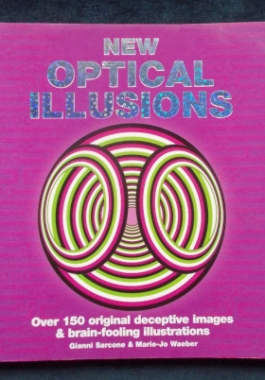 Over 150 original images guaranteed to cross your eyes, baffle your brain and frustrate your friends - there's even one dated from the time of the Ancient Romans. In colour and black and white.
Over 150 original images guaranteed to cross your eyes, baffle your brain and frustrate your friends - there's even one dated from the time of the Ancient Romans. In colour and black and white. -
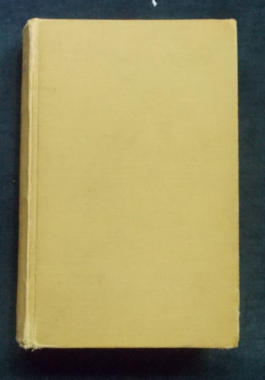
 Esquire's selection of the alumni of literature. These anthologies are becoming scarce, so if you are the type of reader who likes to have everything your favourite author wrote, don't delay! In this volume: Sweet Faces and Foul Minds, George Jean Nathan; Washing the Hands, Aiken A. Dehan; Latins Are Lousy Lovers, Helen Brown Noren; The Wench Is Not Amused, Anonymous; Essay on Jiggling, George A. McNamara; A Report On Man's Best Friend, Lawrence Martin; Christ in Concrete, Pietro di Donato; They Order It Better In France, Anonymous; No More Trouble For Jedwick, Louis Paul; The Beaut From Montana, Frank Scully ; Gold Star Mother, Philip Stevenson; A Good Job Gone, Langston Hughes; What I Am Faithful To My Wife, Thames Williamson; A Breast Of The Times, Herb Graffis; After Baby Comes, Douglass Welch; I Mix The Drinks, W.B. Lytton; Cafeteria Complex, Fred S. Tobey; The Martyr, Newman Levy; Don't Laugh Now, J.C. Furnas; You Can't Sleep With Women, Alan MacDonald; Yonder's Henry! Thorne Smith; Keeping Cool At Conneaut, Paul Gallico; The Resurrection of Solly Moon, Walter D. Edmonds; Greek Tragedy, Ring Lardner; I Drink American and Take Along The Little Pal! Donald Hough; The Snows of Kilimanjaro and On The Blue Water, Ernest Hemingway; Uncle Fonse Laughed, Jesse Stuart; A Duel by Candlelight, Andreas Latzko; The Tall Coorter, Sean O'Faolain; But For This...Lajos Zilahy; A Shot In The Forest, Felix Salten; The Night Before Chancellorsville, F. Scott Fitzgerald; A Place To Lay One's Head, Waldo Frank; The Kid Across the River, William McFee; The Lonesome Vigilante, The Ears of Johnny Bear and A Snake of One's Own, John Steinbeck; You, The Phantom, Theodore Dreiser; Snowfall in Childhood, Ben Hecht; The Seven Men of Rouen, George Slocombe; Black Tobias And The Empire, Heinz Werner; The Five-Pengö Girl, Sandor Hunyady; Never Comes Monday, Eric Knight; The Girl From The River Barge, Walter Schoenstedt; The Whole World Is Outside, Manuel Komroff; August Afternoon, Erskine Caldwell; The Euthanasian Garden, Havelock Ellis; The Art Of Understanding Women, W. Béran Wolfe, M.D.; Queen In The Parlour Car, Joseph E. McDougall; Are Wrestlers People? Westbrook Pegler; Hide Your Eyes and The Old School Tie, Edward Acheson; A Shipment of Mute Fate, Martin Storm; An Idea For A Story, André Maurois; So Smells Defeat, George Antheil; Three Dead Geese, Vincent Sheean; Token Of Esteem, Harlan Ware; Pim and Pooh, Ferdinand Czernin; The Monument, Irwin Shaw; Deutchsland Über Alles, J.L. Campbell; The Bronze Baffler, Hart Stilwell; An Adventureee Retires, Hilaire du Berrier; The Scent of Fear, Jack Melville; Three Skeleton Key, George C. Toudouze; Leningen Versus The Ants, Carl Stephenson.
Esquire's selection of the alumni of literature. These anthologies are becoming scarce, so if you are the type of reader who likes to have everything your favourite author wrote, don't delay! In this volume: Sweet Faces and Foul Minds, George Jean Nathan; Washing the Hands, Aiken A. Dehan; Latins Are Lousy Lovers, Helen Brown Noren; The Wench Is Not Amused, Anonymous; Essay on Jiggling, George A. McNamara; A Report On Man's Best Friend, Lawrence Martin; Christ in Concrete, Pietro di Donato; They Order It Better In France, Anonymous; No More Trouble For Jedwick, Louis Paul; The Beaut From Montana, Frank Scully ; Gold Star Mother, Philip Stevenson; A Good Job Gone, Langston Hughes; What I Am Faithful To My Wife, Thames Williamson; A Breast Of The Times, Herb Graffis; After Baby Comes, Douglass Welch; I Mix The Drinks, W.B. Lytton; Cafeteria Complex, Fred S. Tobey; The Martyr, Newman Levy; Don't Laugh Now, J.C. Furnas; You Can't Sleep With Women, Alan MacDonald; Yonder's Henry! Thorne Smith; Keeping Cool At Conneaut, Paul Gallico; The Resurrection of Solly Moon, Walter D. Edmonds; Greek Tragedy, Ring Lardner; I Drink American and Take Along The Little Pal! Donald Hough; The Snows of Kilimanjaro and On The Blue Water, Ernest Hemingway; Uncle Fonse Laughed, Jesse Stuart; A Duel by Candlelight, Andreas Latzko; The Tall Coorter, Sean O'Faolain; But For This...Lajos Zilahy; A Shot In The Forest, Felix Salten; The Night Before Chancellorsville, F. Scott Fitzgerald; A Place To Lay One's Head, Waldo Frank; The Kid Across the River, William McFee; The Lonesome Vigilante, The Ears of Johnny Bear and A Snake of One's Own, John Steinbeck; You, The Phantom, Theodore Dreiser; Snowfall in Childhood, Ben Hecht; The Seven Men of Rouen, George Slocombe; Black Tobias And The Empire, Heinz Werner; The Five-Pengö Girl, Sandor Hunyady; Never Comes Monday, Eric Knight; The Girl From The River Barge, Walter Schoenstedt; The Whole World Is Outside, Manuel Komroff; August Afternoon, Erskine Caldwell; The Euthanasian Garden, Havelock Ellis; The Art Of Understanding Women, W. Béran Wolfe, M.D.; Queen In The Parlour Car, Joseph E. McDougall; Are Wrestlers People? Westbrook Pegler; Hide Your Eyes and The Old School Tie, Edward Acheson; A Shipment of Mute Fate, Martin Storm; An Idea For A Story, André Maurois; So Smells Defeat, George Antheil; Three Dead Geese, Vincent Sheean; Token Of Esteem, Harlan Ware; Pim and Pooh, Ferdinand Czernin; The Monument, Irwin Shaw; Deutchsland Über Alles, J.L. Campbell; The Bronze Baffler, Hart Stilwell; An Adventureee Retires, Hilaire du Berrier; The Scent of Fear, Jack Melville; Three Skeleton Key, George C. Toudouze; Leningen Versus The Ants, Carl Stephenson. -
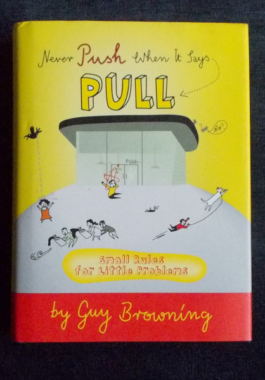 How to survive minor social embarrassments - and somewhat reminiscent of The Grumpy Old Men television series! Have you ever queued, exasperated by the repeated cry of 'Next!' and asked the man in front, 'Are you deaf?' only to discover that he is? Who hasn't tried to slip under the covers before the lover of their dreams discovers they're wearing chewing-gum-grey undies? If you have, then Guy Browning is here with an invaluable guide to surviving such toe-curling moments. His advice includes: What to do when you discover the man you beeped, flashed and swore at for driving too slowly is your girlfriend's father who you'll meet for the first time that night. How to convince your friends that shoes with loo-paper attached to the soles are now a cutting-edge fashion statement. How to argue, persuasively, that George Eliot is in fact a man. Also included: how to use a library; how to push a shopping trolley; how to shop by catalogue and how to exaggerate.
How to survive minor social embarrassments - and somewhat reminiscent of The Grumpy Old Men television series! Have you ever queued, exasperated by the repeated cry of 'Next!' and asked the man in front, 'Are you deaf?' only to discover that he is? Who hasn't tried to slip under the covers before the lover of their dreams discovers they're wearing chewing-gum-grey undies? If you have, then Guy Browning is here with an invaluable guide to surviving such toe-curling moments. His advice includes: What to do when you discover the man you beeped, flashed and swore at for driving too slowly is your girlfriend's father who you'll meet for the first time that night. How to convince your friends that shoes with loo-paper attached to the soles are now a cutting-edge fashion statement. How to argue, persuasively, that George Eliot is in fact a man. Also included: how to use a library; how to push a shopping trolley; how to shop by catalogue and how to exaggerate. -
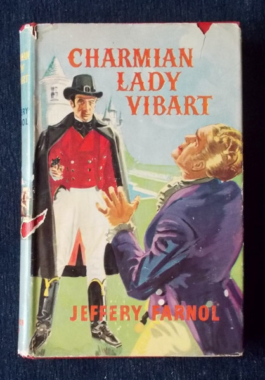
The sequel to The Broad Highway. This is the story of the fiery Charmian's love for her husband and reckless son - and the passion her beauty arouses in two ruthless men. Charmian, now in her forties and a great deal more wary and wise, is still a great beauty and not afraid to gamble life and honor in a sinister and perilous game. While in Paris, young Richard Vibart, son of Sir Peter and Lady Charmian, receives a challenge from Henri Willoughby-Gafton, a famous duelist whom Richard has slapped for speaking lightly of Lady Charmian. When Sir Peter hears of it he hurries to Paris, while Charmian - with a plan of her own - follows secretly. But is Henri Willoughby-Gafton the real villain? Mr. Bob Meadows, the valet from The Broad Highway also makes a reappearance. Set during the Regency.
-

The Bondman: Hall Caine
$10.00First published in the late 1890s, this is the tale of half-brothers Michael and Jason. Jason is sworn to avenge the wrongs done to their father; Michael is sworn to rectify them. The story moves from the Isle of Man to Iceland. On the way the half brothers encounter love, personal upheaval, political revolutions and natural disasters. This is not only a literal journey - it is also a spiritual journey. -
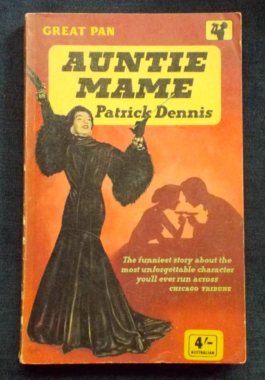
Auntie Mame: Patrick Dennis
$10.00The madcap story of Patrick's adoption at the age of ten by his zany, unconventional Auntie Mame. And life with Auntie Mame was never ever dull! Sparklingly witty, irreverently satirical, this 1955 novel manages to remain timelessly relevant in its cutting send-up of conformity and conservatism. Patrick reminisces his way through life with Mame in the glittering Roaring Twenties, surviving the Great Depression, her marriage and widowhood, World War II and into his first forays into romance. Based on a real Aunt. Cover shows Rosalind Russell in the 1958 film of the same name. -
 Hundreds of hopefuls congregate at a cattle call for Broadway dancers. Sour director, Zach and his brusque assistant whittle down the ranks until they're left with 16 dancers. Each one has a story - some are tragic, some are comic - and explain their love of dance. Tension mounts when Cassie - once both a big star and the director's lover but now desperate for a part - auditions. But Zach must choose only the best for his show. Musical.
Hundreds of hopefuls congregate at a cattle call for Broadway dancers. Sour director, Zach and his brusque assistant whittle down the ranks until they're left with 16 dancers. Each one has a story - some are tragic, some are comic - and explain their love of dance. Tension mounts when Cassie - once both a big star and the director's lover but now desperate for a part - auditions. But Zach must choose only the best for his show. Musical. -
 The plays of Noel 'The Master' Coward still draw audiences today. This is a compilation of the Mermaid Theatre's Cowardy Custard which brought together the best of Noel Coward, as well as some of his less well-known songs and poems. Beautifully illustrated with colour and black and white drawings and photos.
The plays of Noel 'The Master' Coward still draw audiences today. This is a compilation of the Mermaid Theatre's Cowardy Custard which brought together the best of Noel Coward, as well as some of his less well-known songs and poems. Beautifully illustrated with colour and black and white drawings and photos. -
 Welcome to the world of Art Handel, a world where the unexpected and expected often collide with the absolutely and totally unexpected and with little regard for each other. While it's sometimes nice to see how the other half live, this book gives you an insight into how the other half of that other half live. Described as 'dark and enlightening, horrific and hilarious...funny stuff emerges from the damndest places...like a clown with a razor blade...startling...original and darkly gleeful...think Stephen King on laughing gas...'
Welcome to the world of Art Handel, a world where the unexpected and expected often collide with the absolutely and totally unexpected and with little regard for each other. While it's sometimes nice to see how the other half live, this book gives you an insight into how the other half of that other half live. Described as 'dark and enlightening, horrific and hilarious...funny stuff emerges from the damndest places...like a clown with a razor blade...startling...original and darkly gleeful...think Stephen King on laughing gas...' -
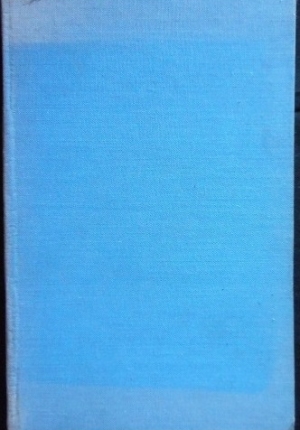
 Set in an orphanage founded by an archbishop, the story opens on the No 14 bus trundling through London. The reader is given the background on most of the bus passengers - shadowy figures that play but a brief role - save one. A young woman who leaves the bus and disappears into the fog to the orphanage where she leaves a warmly wrapped baby on the doorstep. She kisses the child and leaves and all that is left is this new born child with a label attached to the shawl saying "Sweetie". And so Sweetie's life in St Mark's Orphanage begins. It is not a harsh, Dickensian place - the children are well cared for and it is run by Canon Mallow, sweet-natured, kind and slightly inept. He loves all the children but he is soon to retire and his place is taken by a new appointee, Dr Samuel Trump who is determined that St Mark's will be run efficiently - on proper lines - and he is appalled at the inefficiency and disorganisation he sees before him. Sweetie and Ginger, a real holy terror, strike up a friendship. Ginger is always up to all sorts of mischief and tricks who even manages to climb over the wall at night and go 'up West' on forays into the big wide world. He is the bane of Dr Trump's life as no amount of punishment or detentions seem to have any effect on him whatsoever and Sweetie, who has an adventurous streak in her as well, causes a lot of upset for the new Warden. https://cosmiccauldronbooks.com.au/p/london-belongs-to-me-norman-collins-2/
Set in an orphanage founded by an archbishop, the story opens on the No 14 bus trundling through London. The reader is given the background on most of the bus passengers - shadowy figures that play but a brief role - save one. A young woman who leaves the bus and disappears into the fog to the orphanage where she leaves a warmly wrapped baby on the doorstep. She kisses the child and leaves and all that is left is this new born child with a label attached to the shawl saying "Sweetie". And so Sweetie's life in St Mark's Orphanage begins. It is not a harsh, Dickensian place - the children are well cared for and it is run by Canon Mallow, sweet-natured, kind and slightly inept. He loves all the children but he is soon to retire and his place is taken by a new appointee, Dr Samuel Trump who is determined that St Mark's will be run efficiently - on proper lines - and he is appalled at the inefficiency and disorganisation he sees before him. Sweetie and Ginger, a real holy terror, strike up a friendship. Ginger is always up to all sorts of mischief and tricks who even manages to climb over the wall at night and go 'up West' on forays into the big wide world. He is the bane of Dr Trump's life as no amount of punishment or detentions seem to have any effect on him whatsoever and Sweetie, who has an adventurous streak in her as well, causes a lot of upset for the new Warden. https://cosmiccauldronbooks.com.au/p/london-belongs-to-me-norman-collins-2/ -

Pale Rider: Alan Dean Foster
$10.00A nameless stranger rides into the corrupt and explosive gold-rush town of Lahood, California. His arrival coincides with the prayer of a young girl who is hoping for a miracle to end the sudden and random violence in the community. Fifteen year-old Megan quietly recites from the Bible: "And I looked, and beheld a pale horse: and his name that sat on him was Death and Hell followed with him.' A story of confrontation in a lawless time, the nameless stranger becomes a catalyst for hope and retribution. A struggle between ruthless corporation gunmen and innocent independent miners takes on a new meaning with the appearance of the enigmatic horseman... A novelisation based the screenplay of the film Pale Rider by Michael Butler and Dennis Shryack. Follows the film almost exactly. The book contains stills from the film. -
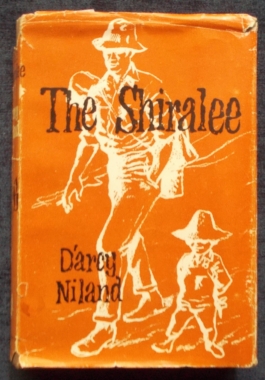
The Shiralee: Darcy Niland
$10.00A shiralee is a swag, a burden - and Macauley tramps through the back towns of New South Wales, looking for work, with his swag and his shiralee - his four year old daughter, Buster, taken from her loose-living mother by Macauley in a fit of vengeful rage. Buster is a bundle of loyalty, fortitude and natural childishness, yet she is no joy to Macauley, who treats her with uncompromising firmness. She must go on walking with him; she must stop her chattering when he wants quiet; she must not complain. But he has a grudging affection for her, an affection which grows without his realising it - until it is threatened. Now, not only must he admit his love for his daughter, his shiralee, but he must also realise how many true friends he really has. Here are other very real Australian characters: shopkeepers, stock agents, publicans, shearers, ex-fighters - all set against the Australian bush background of the 1950s. Niland's first novel, filmed twice. -
 Bride-to-be Sophie is on a quest to find her father before the big day. The only problem is - she's not sure who he is! After reading her mother's diary, she narrows it down to three great loves. So she invites them all - knowing her mother would not approve - and tries to conceal their presence...but it's not long until the secret's out!
Bride-to-be Sophie is on a quest to find her father before the big day. The only problem is - she's not sure who he is! After reading her mother's diary, she narrows it down to three great loves. So she invites them all - knowing her mother would not approve - and tries to conceal their presence...but it's not long until the secret's out! -
 Mikes, Hungarian immigrant to Britain, was always bewildered by the English and their customs. He took it in stride - eventually - and began his observations of British life and thence onward to encompass the rest of the world. He realises that people are not only funny, but they're at their funniest when trying to be serious. Mikes went to the United Nations and found them all being hilariously serious!
Mikes, Hungarian immigrant to Britain, was always bewildered by the English and their customs. He took it in stride - eventually - and began his observations of British life and thence onward to encompass the rest of the world. He realises that people are not only funny, but they're at their funniest when trying to be serious. Mikes went to the United Nations and found them all being hilariously serious! -
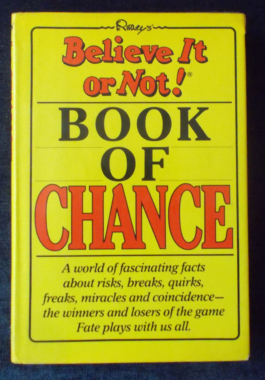 Before the Darwin Awards, there was Ripley's world of fascinating facts about risks, breaks, quirks, freaks and miracles. Such as... Minnie Gawell, who, in drawing a raffle, picked her own numbers four times in succession; if Bram Stoker had not eaten crab for his dinner (which gave him awful nightmares) the world would never have had Frankenstein; and the refugees from floods in Pakistan who received a supply of brassieres. Over 300 pages of the very weird but very true. With illustrations and photographs.
Before the Darwin Awards, there was Ripley's world of fascinating facts about risks, breaks, quirks, freaks and miracles. Such as... Minnie Gawell, who, in drawing a raffle, picked her own numbers four times in succession; if Bram Stoker had not eaten crab for his dinner (which gave him awful nightmares) the world would never have had Frankenstein; and the refugees from floods in Pakistan who received a supply of brassieres. Over 300 pages of the very weird but very true. With illustrations and photographs. -

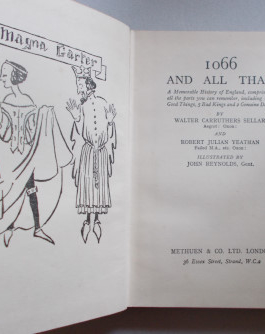 History as you've never learnt it before - from the invasion of Briton to Alfred the Cake, to Anne (A Dead Queen), The Merrie Monarch and WilliamandMary who were a pair of Oranges. A lot of it reads like a Blackadder script with typical English humour.
History as you've never learnt it before - from the invasion of Briton to Alfred the Cake, to Anne (A Dead Queen), The Merrie Monarch and WilliamandMary who were a pair of Oranges. A lot of it reads like a Blackadder script with typical English humour.With comic illustrations by John Reynolds. -

Coronation: Paul Gallico
$10.00June 2, 1953. It's a great day for the Commonwealth - it's the coronation day of the young, beautiful Elizabeth II. Will Clagg, steelworker, his wife Violet, their two children Johnny and Gwinny and Grumbling Granny are determined to see this wondrous event. No matter how long the day, nor the obstacles to be encountered...Each member of the family learns a great deal on this important day, and returns home laden with life-long gifts they never expected. -
 Or: Twenty Reasons Why Growing Old is Great! Virginia takes the reader on a wacky journey where growing old is not a loss but a gain. If your memory's going, you can forget all the ghastly men you slept with...you can have the fun of comparing all your ailments with other oldies...and you can be a legitimate bore since you're in your 'anecdotage'. Includes fun little verses as well. A really good guide to growing old disgracefully.
Or: Twenty Reasons Why Growing Old is Great! Virginia takes the reader on a wacky journey where growing old is not a loss but a gain. If your memory's going, you can forget all the ghastly men you slept with...you can have the fun of comparing all your ailments with other oldies...and you can be a legitimate bore since you're in your 'anecdotage'. Includes fun little verses as well. A really good guide to growing old disgracefully. -
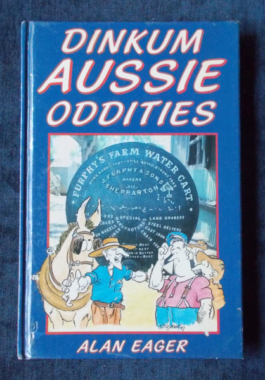 A guide book for those things that could only be found in Australia: Snake Gully's 'Dad and Dave' statues near Gundagai; the famous 'Dog on the Tuckerbox'; The Big Cod at Tocumwal and the Big Yabby at Wentworth; The Big Sapphire near Anakie and much more...and not forgetting the infamous 'Furphy.' This book is definite proof that Australians really are a 'weird mob'. Illustrated with cartoons and colour and black and white photographs.
A guide book for those things that could only be found in Australia: Snake Gully's 'Dad and Dave' statues near Gundagai; the famous 'Dog on the Tuckerbox'; The Big Cod at Tocumwal and the Big Yabby at Wentworth; The Big Sapphire near Anakie and much more...and not forgetting the infamous 'Furphy.' This book is definite proof that Australians really are a 'weird mob'. Illustrated with cartoons and colour and black and white photographs. -


The Falcon: E.V. Timms
$10.00A tale set in the reign of Charles II - kings and princes, cavaliers and courtesans, flashing blades and raking shot from tall ships. There are plots and counter-plots simmering under the glittering mask of court life and all Englishmen see a deadly threat in the ambitions of Louis XIV pf France. First published as Whitehall in 1931. -

 Mary and Tony's parents do not take them to the seaside as usual for their holiday. Instead, they are going to have their holiday at Fallow Farm where they'll learn about animals both tame and wild. This would not be a story with enough sophistication for modern children, but the illustrations alone make this a very worthwhile book.
Mary and Tony's parents do not take them to the seaside as usual for their holiday. Instead, they are going to have their holiday at Fallow Farm where they'll learn about animals both tame and wild. This would not be a story with enough sophistication for modern children, but the illustrations alone make this a very worthwhile book. -
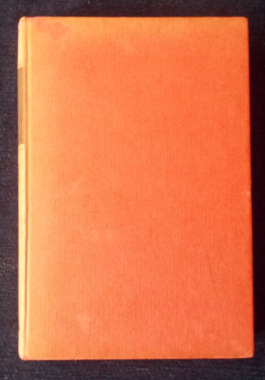
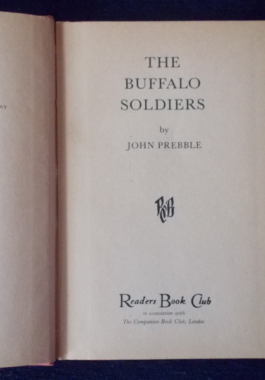
Lietenant Garrett Byrne has just recently been promoted to take command of a squad of black soldiers. Irish-born and no-nonsense, he clashes frequently with his second-in-command, and struggles with his feelings over being placed in charge of such a squad. His troop is assigned the duty of guiding and protecting a band of reservation Comanches who want to hunt buffalo. Along the way, they encounter hide hunters, a white homestead family with a mother and two small children, and a band of Indian-hunting Texas Rangers. It's a volatile mix was the journey becomes a grim tale of chase and survival amid racial hatred and violence.


